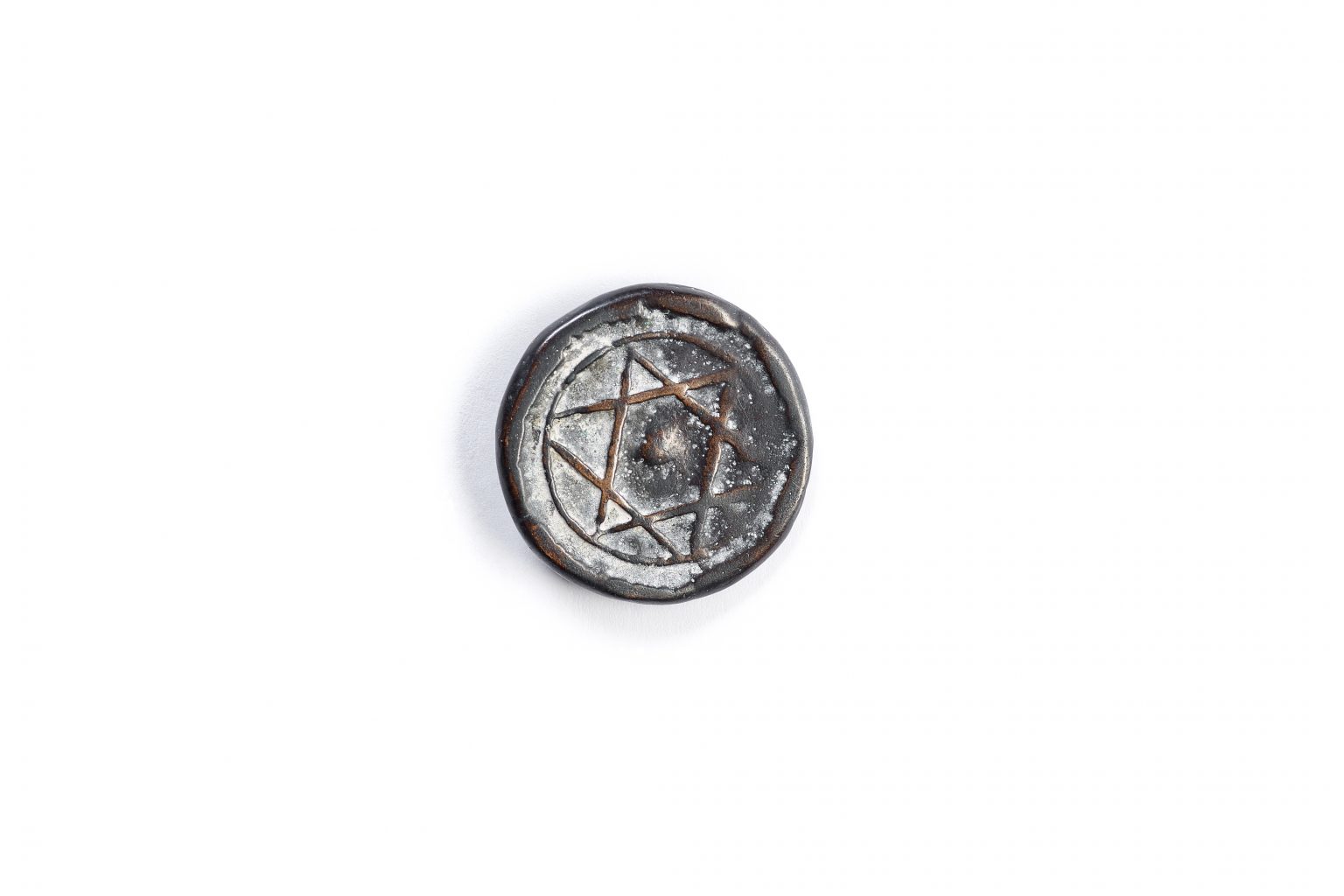Moroccan Coin
Morocco, ca. 1860
Copper alloy
Gift of Abraham Levi
The coin features a hexagon which is both a Star of David and a common Moroccan symbol. In the late 19th century Morocco’s Jews were tasked with pressing the country’s coins and they designed them as they wished.
Must Know
This coin is believed to be from Gibraltar, a British oversees territory at the Southern tip fo the Iberian Peninsula between Spain and the African coast.
Small irregularly copper coins such as this one are called falus and used as currency in North Africa, Arabia, India and neighbouring countries, holding the value of approximately one fourth of a cent.
The hexagram that serves as the star of David for Jews is also an important Moroccan symbol, namely the seal of Solomon, attributed to King Solomon. In Arabic medieval tradition, the signet ring is believed to have given Solomon the power to command demons, genies and spirits. Solomon’s singlet ring is seen as an amulet or symbol for medieval and Renaissance-era magic and alchemy.
More Info
Moroccan coins/falus were often hammered or cast.
It is believed that the Seal of Solomon inspired Jewish mysticism and is said to be the predecessor of the Jewish Star of David. Some scholars connect the symbol to 3rd century hellenistic Jewish alchemy in Egypt. Additionally, the symbol is also said to have entered medieval Spanish and Arabic Kabbalistic traditions. The pentagram can also be connected to traditions from Renaissance magic, which in itself is strongly inflected by medieval Jewish mysticism.

